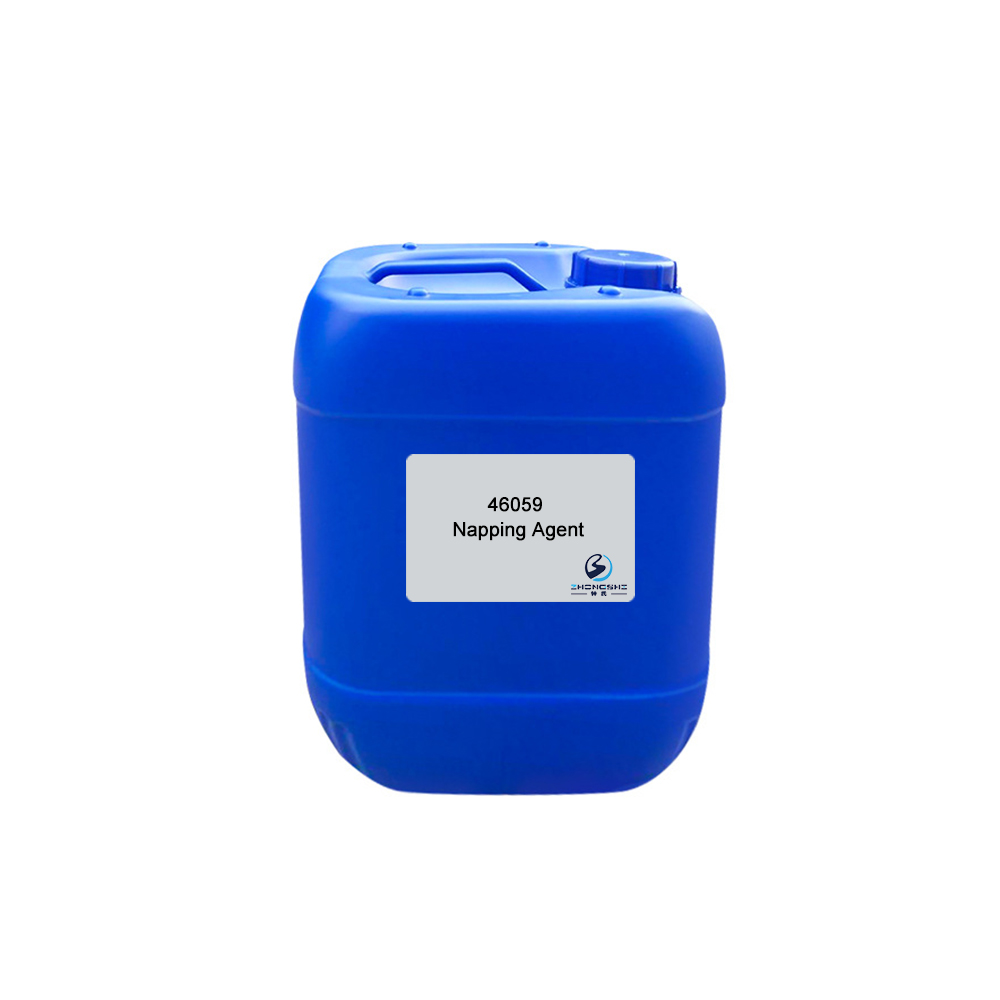46059 Napping Agent
Features & Benefits
- Excellent stability. Can be directly used in dyeing bath.
- Imparts fabrics soft and fluffy hand feeling.
- Makes the suede smooth and the nap fine, even, glossy and smooth to achieve successful napping.
- Low yellowing. Low shade changing.
- Extremely little influence on color fastness.
Typical Properties
| Appearance: | White emulsion |
| Ionicity: | Nonionic |
| pH value: | 6.0±1.0 (1% aqueous solution) |
| Solubility: | Soluble in water |
| Application: | Synthetic fiber and their blends, etc |
Package
120kg plastic barrel, IBC tank & customized package available for selection
TIPS:
Surface finishing
The principal object of finishing fabric is to confer a more pleasing appearance and handle or to render the fabric more suitable for a particular end use. It has long been known that simple physical or mechanical treatments can change the appearance and properties of textile fabrics significantly. As little or no water is used during the processes, mechanical finishes are often termed as ‘dry finish’. The mechanical treatments are significantly affected by the extent of heat and pressure applied, the moisture content of the material during the treatments and on the pretreatment of the fabric with gum and starchy products. The traditional batchwise mechanical finishes have now been replaced by continuous treatments capable of finishing at high speed.
Moreover, better control of machine parameters is possible in continuous state-of-the[1]art finishing machinery and they assure that the fabrics being finished are consistently to close tolerances. The surface characteristics of fabrics can be altered by a variety of techniques. The surface modifications aim to improve smoothness, roughness, luster, adhesion, dyeability and wettability, in addition to removing creases and wrinkles.








